Fully Automated Used Tire Recycling Process.
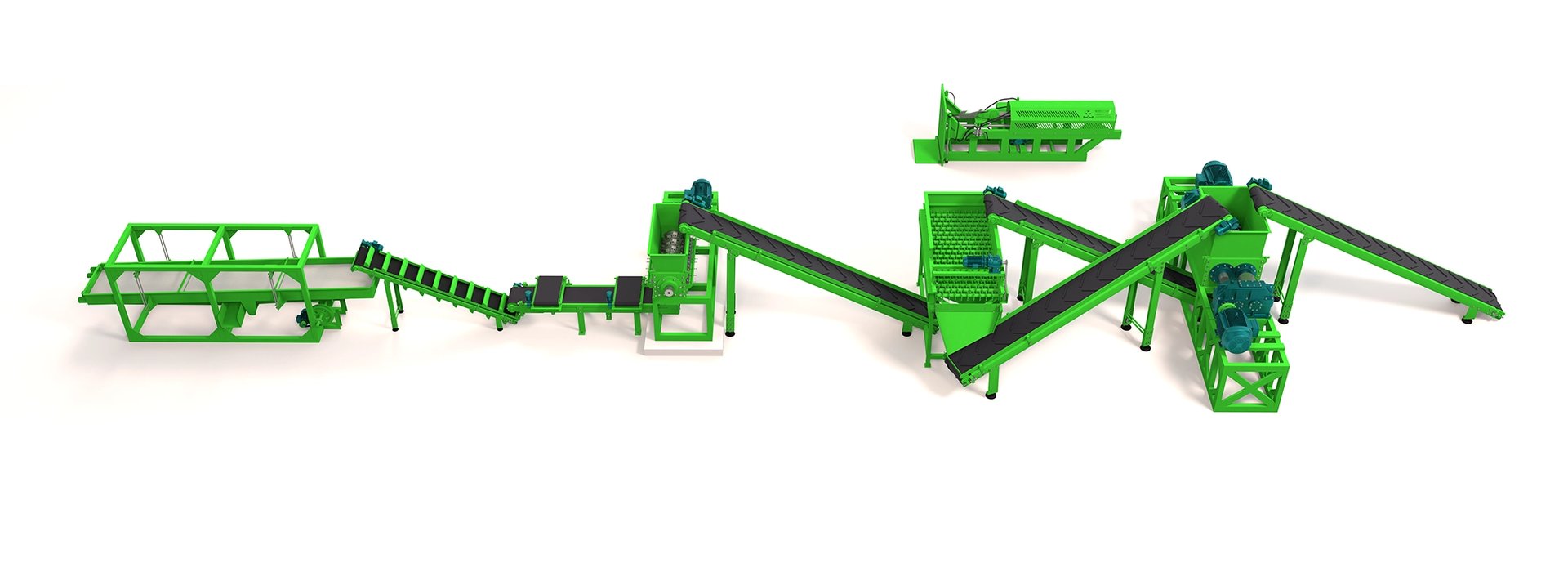
Stage 1: Removal of the Steel Wire from the Tire Bead
Machine Used: De-beader.
Objective: Removal of the steel wire around the bead in preparation for the cutting and size reduction phase.
The purpose of this stage is to protect the shredder (Shredder) and granulator (Granulator) blades from dealing with a bundle of steel wire, which can sometimes be as thick as 50 mm. This increases the lifespan of the shredder and granulator blades.
The steel wire around the bead accounts for 10% to 15% of the tire's total weight.
Additionally, fine wire appears later during the grinding process, adding an extra 10% to 15%.
In total, the steel wire in both forms represents around 25% of the tire's overall weight.

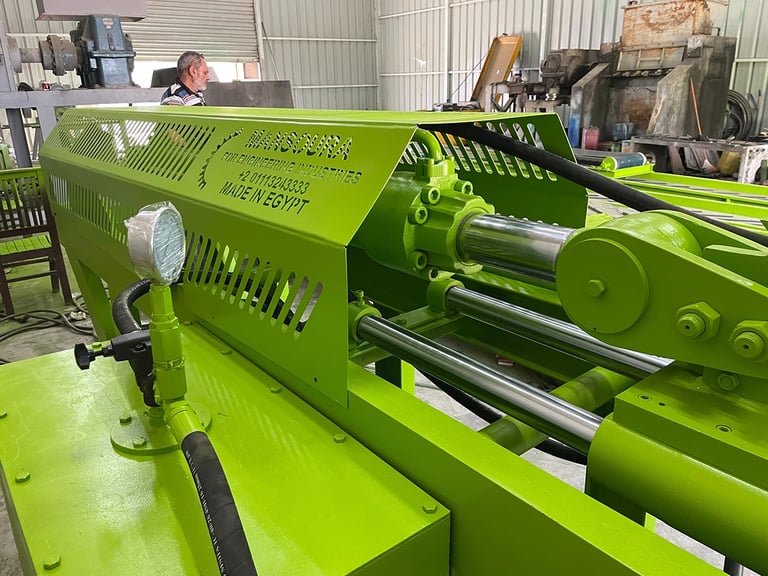

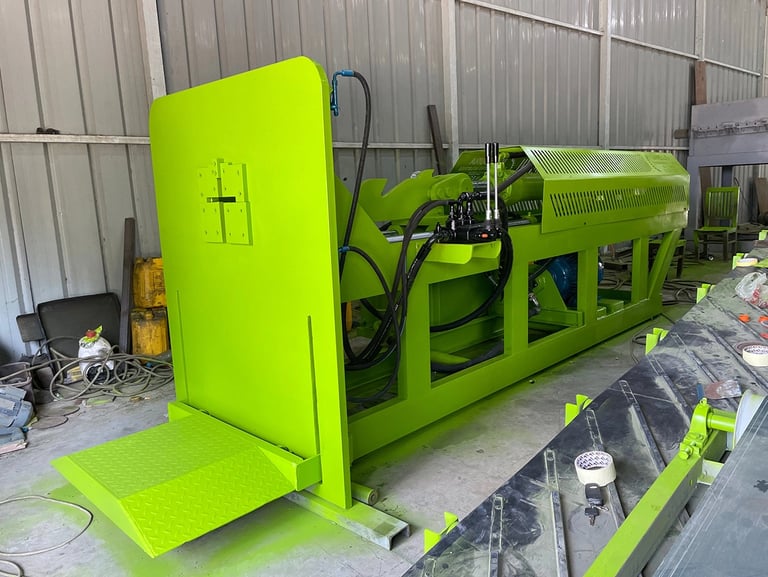


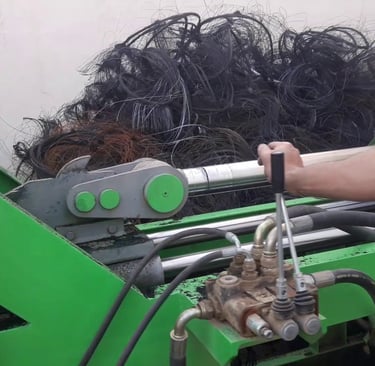
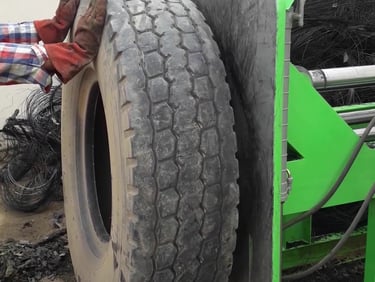

Inputs: Tires
Output: Steel Wire
Objective: Cut tires into small chips, sized 5 cm or less.
Application: These chips can be used as an alternative thermal energy fuel (TDF) in cement kilns, serving as an economical substitute for diesel or gas.
Note: These chips can be considered a final product at this stage if the goal is to use them as fuel.
Stage 2: Shredder and Size Reduction
Machines Used: Shredder and Desk-screen

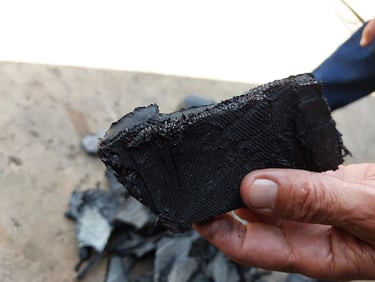

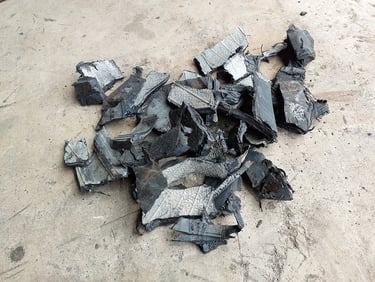

Output: 5 cm Chips
Inputs: De-beaded Tires
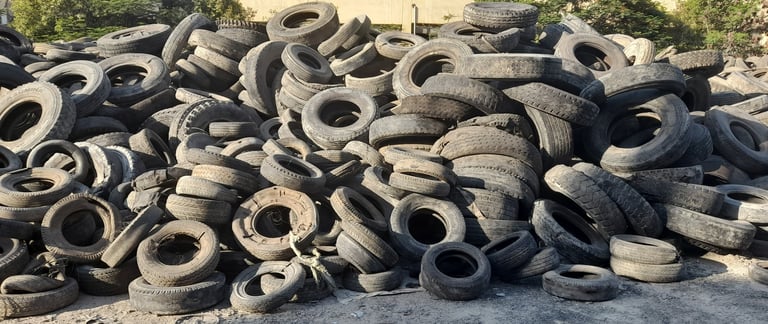

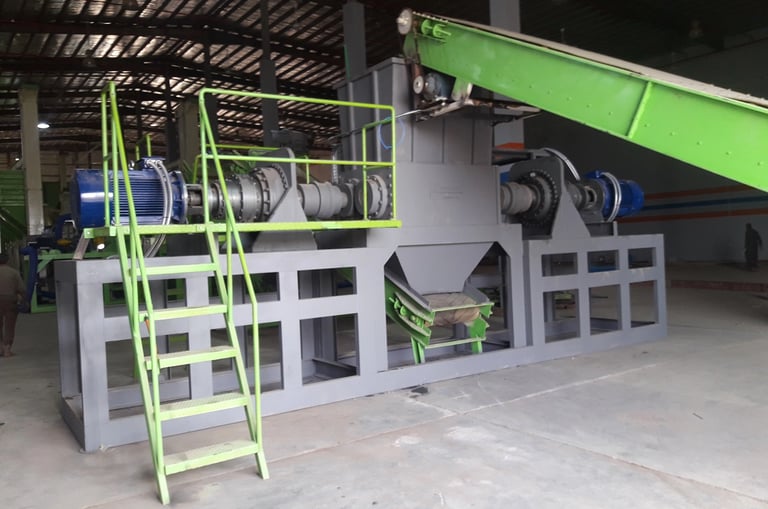

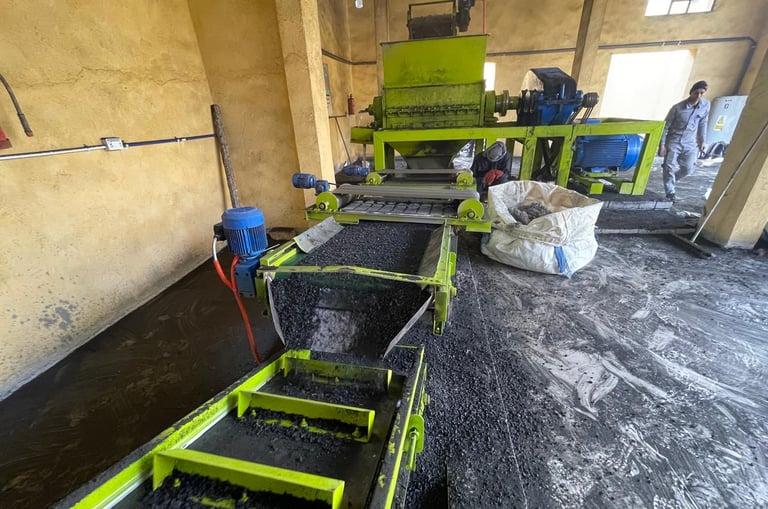

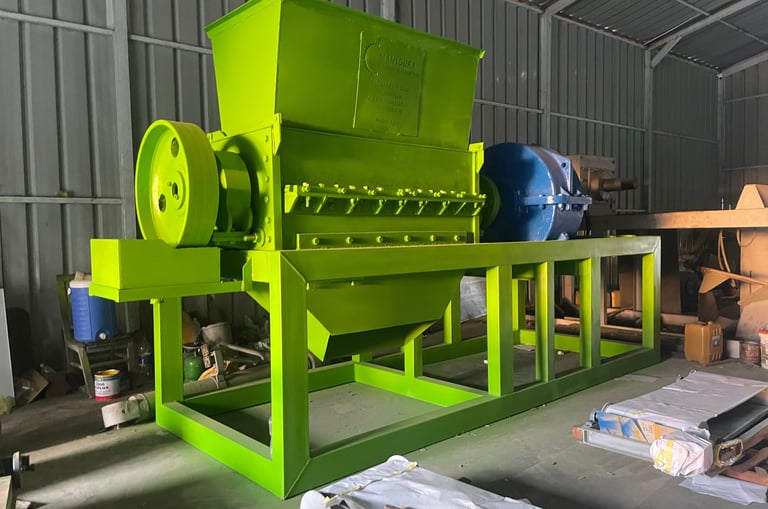



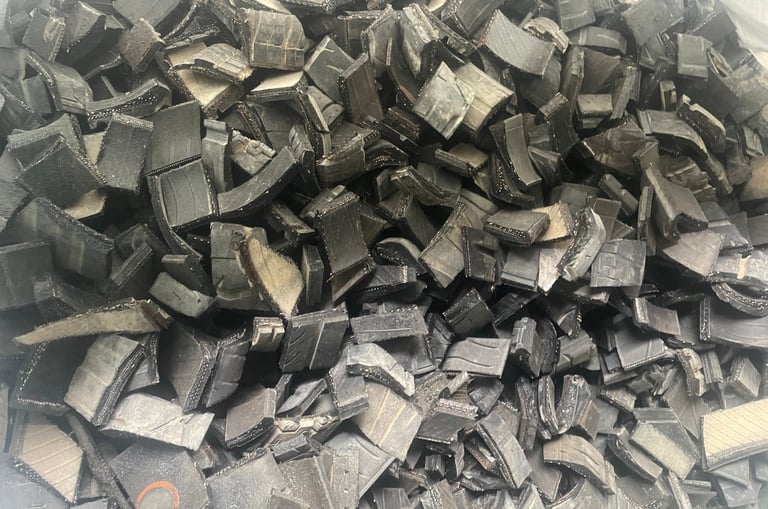

Input: 5 cm chips resulting from manual recycling plants
Input: 5 cm chips resulting from the shredder machine

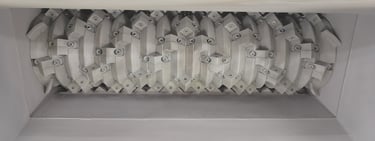
Stage 3: Grinding
Machines Used: Granulator / Breaker
It grinds the 5 cm tire chips or smaller pieces produced by the shredder unit into granules and steel wire.

Stage 4: Wire Separation
Machines Used: Magnetic Separation Units
It is used to separate the fine wire produced during the grinding process.
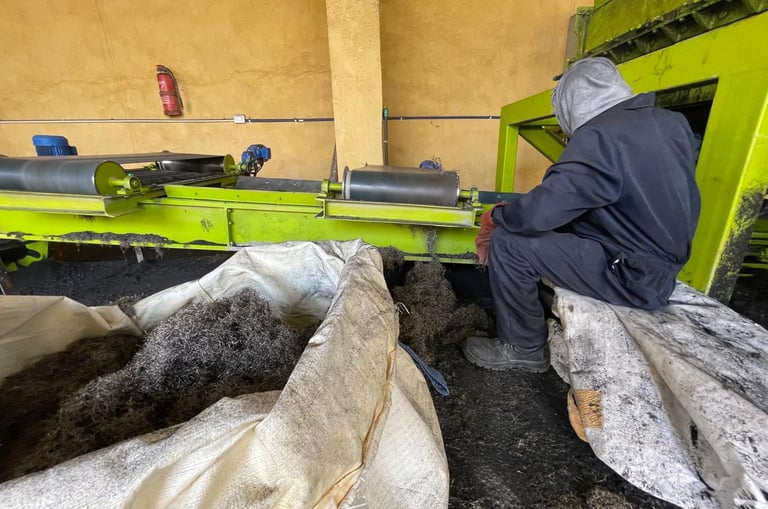

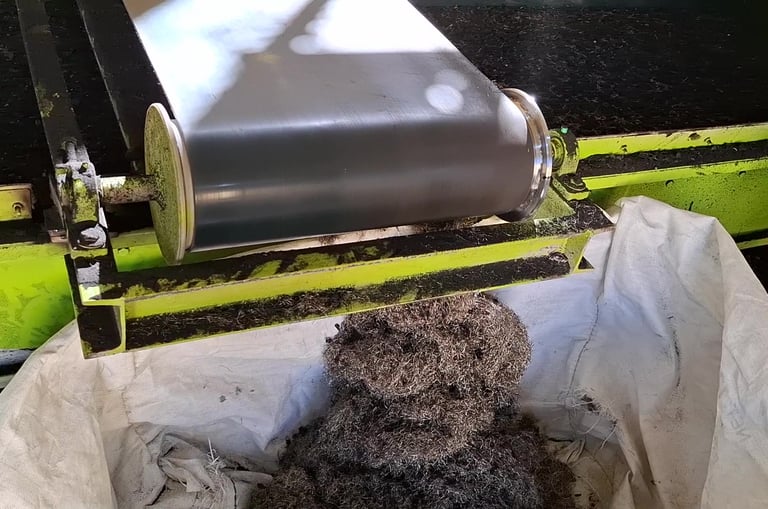

Stage 4: Size Sorting
Machines Used: Horizontal Vibrating Screen (Size Separation Machine).
It separates the different sizes of rubber granules, allowing each size to be used in its appropriate industry.
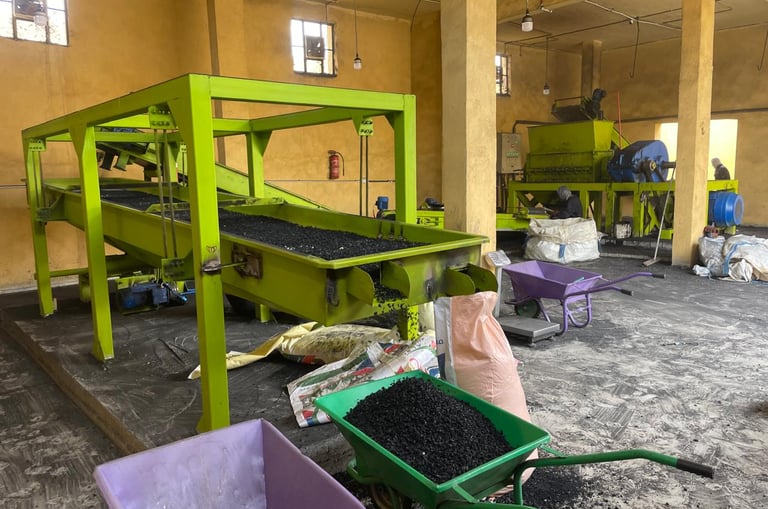

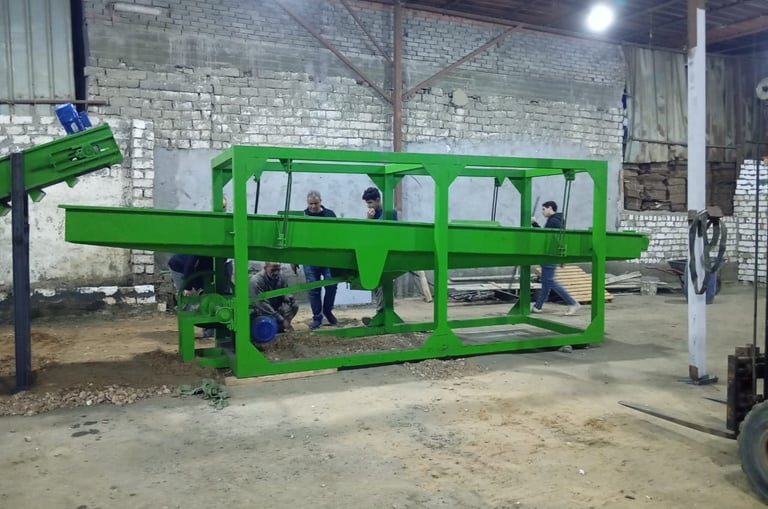



Powder Less Than 1 mm
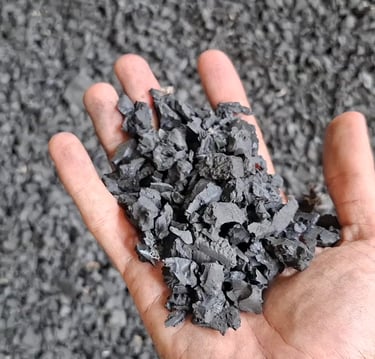

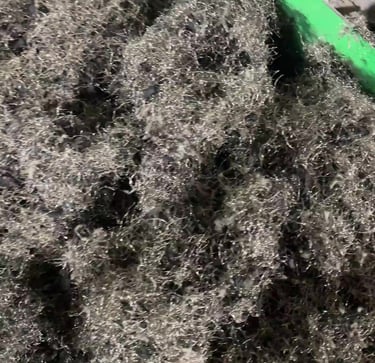

5 to 12 mm Granules
Wire
Outputs
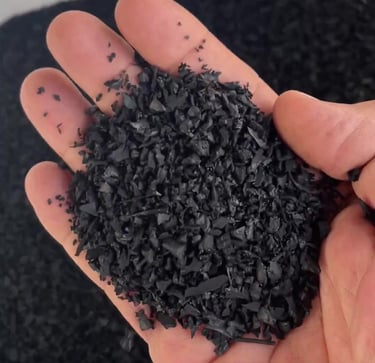

Output per Ton:
Average 70% Rubber Granules (1 to 4 mm) (and 5 to 12 mm granules if desired).
Average 15% Fine Wire produced during grinding in the granulator.
Average 5% Fine Powder (resulting from friction between rubber parts during cutting in the granulator).
Average 2% Fiber (if present in the tire).
Average 15% Steel Wire Around the Bead (resulting from the de-beader stage mentioned earlier).
Average Steel Wire in the Tire: 25%.
Application:
1 to 4 mm Granules are used in the production of sports flooring, tartan, and rubber tiles.
Price: Approximately $168 per ton at the factory.5 to 12 mm Granules are used as an alternative thermal energy fuel (TDF) in cement kilns, serving as an economical substitute for diesel or gas.
Price: Approximately $148 per ton at the factory.Fine Rubber Powder (less than 1 mm) is used in the production of rubberized asphalt, sound and vibration insulation materials, such as soundproofing and vibration-damping products in cars and buildings, as well as recycled rubber products like shoe insoles, rubber carpets, and other flexible rubber products.
Price: Approximately $168 per ton at the factory.Steel Wire is sold as scrap.
Price: Approximately $160 for steel wire around the bead, and $220 for fine wire.
Note: Prices are approximate and subject to change, based on the Egyptian market.
1 to 4 mm Granules
Innovation
Pioneers in the Recycling Industry in the Middle East and Africa.
Egypt - Dakahlia - Mansoura.
Mail@mans4eng.com
+201066554148
